Durability. Beauty. Utility. Modernity. Economy. Each of us is able to list a number of qualities that characterize (or should characterize) good architecture. Of course, depending on the worldview presented, the definitions of the various terms will differ, because can blocks of large slabs be beautiful? Personally, I think they are, and I agree with architect Krystyna Krygier, who spoke of a "new kind of beauty" of concrete estates. Certainly, supporters of classical thought about architecture, for whom social-modernism will not only not be beautiful, but also useless and impermanent, will disagree with me.
When I look at the buildings erected in the 60s and 70s of the past century in my mind there is another concept that characterizes them: unpretentiousness.
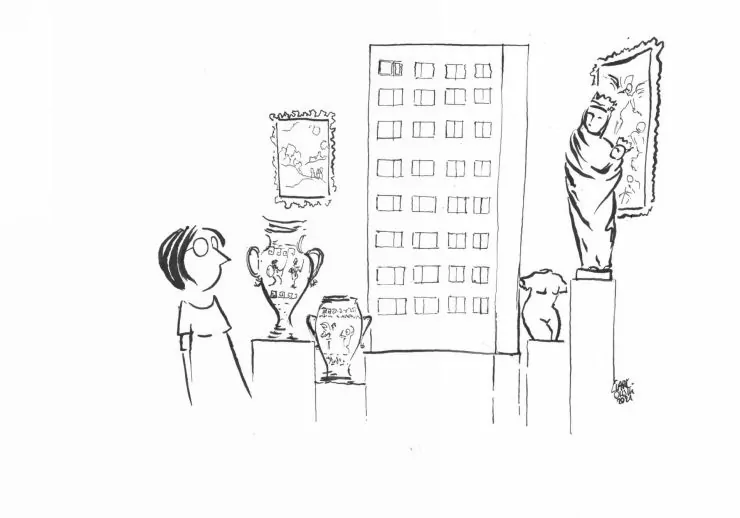


can big-plate blocks be beautiful?
il: Błażej Ciarkowski
Thearchitecture of postwar modernism did not pretend. A school was a school, not a nobleman's mansion. A department store was a simple product box, not the palace of a Renaissance banker. The factory did not hide behind the mask of a Romanesque castle. Austerity was dictated by scarcity of materials, but also by ideology. Only in special circumstances were noble materials used. Most often, what was at hand was used, which by its "ordinariness" emphasized the egalitarian character of the architecture. If stone - then local broken limestone or river pebbles. Ceramics - often from nearby factories. Even the elements of plastic decoration seem to arise from the surrounding everyday life. We see beauty growing out of close ties with the profane, rather than the elusive sacred. Not justified by economics and functionality, formalistic displays were stigmatized as a manifestation of "quack modernism"!
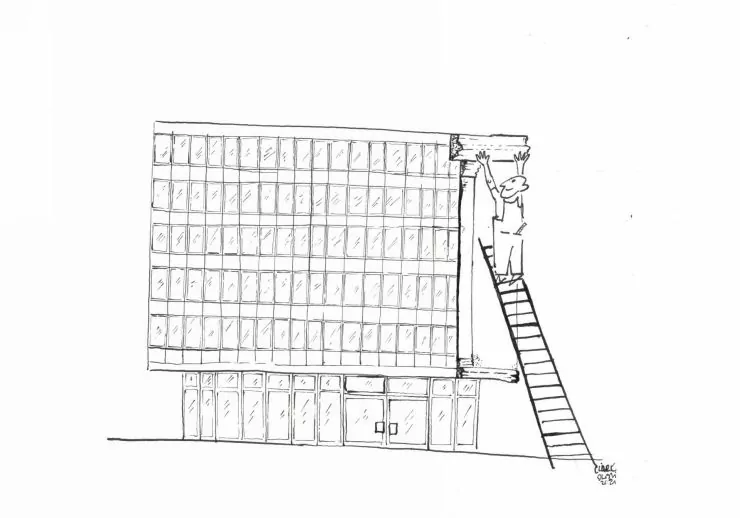


modernizing socmodernism in Lodz
il: Błażej Ciarkowski
So what do unpretentiousness and preservation of the heritage of socialist modernism have in common?
For a long time now, the world of architecture has been wondering not "whether" but "how" to protect the heritage of 20th-century avant-garde movements. Meanwhile, on the Vistula River, controversy continues to be aroused by the demand to extend conservation protection to the realizations that were created in the 1960s. There is still a repeated opinion among architecture professionals that monument status can be granted to buildings that are more than fifty years old. Those who believe that modernism still endures deny it the title of "heritage of a bygone era," and thus the right to the protection afforded to monuments. "Let's recognize them as Assets of Modern Culture," they - they propose a Solomon solution.
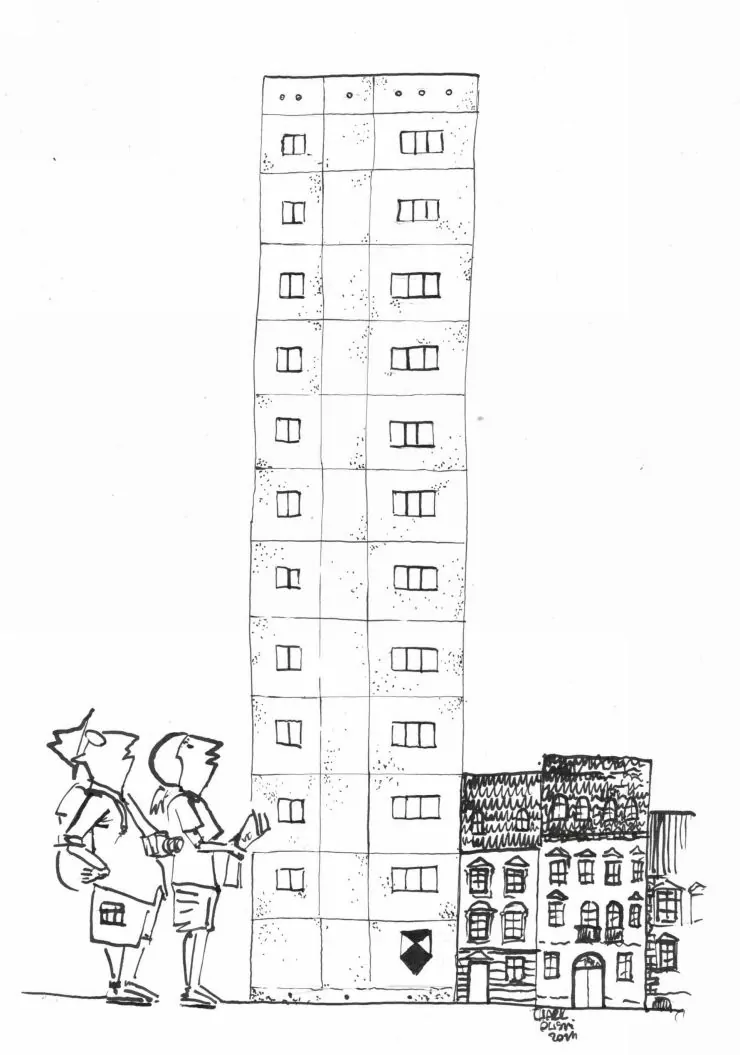


It still happens that controversy is aroused by the postulate to include under conservation protection the realizations that were created in the 1960s}
il: Błażej Ciarkowski
Despite its proximity to Warsaw, where the Provincial Conservator of Monuments has included the Central Railway Station, among others, in the register, Łódź persistently resists the tendency to include the heritage of socmodernism under legal protection. Lodz's youngest monuments were built in the 1950s! The exceptions are the building of the Grand Theater, which was completed in 1966 and declared a monument nine years later, and the former S. Abbe factory in Radogoszcz, which was turned into a museum-museum in the early 1960s. One of the grievous consequences of the lack of systemic protection is the melting stock of valuable objects. Over the past decades we have "managed" to spoil most of the most valuable relics of communist modernism. The Academy of Fine Arts, one of only two Lodz buildings honored with the 1st Prize of the Minister of Construction, has been expanded with new pavilions whose form is far from the sophistication of Boleslaw Kardaszewski's work. The Institute of Physics was covered with a thick layer of thermal insulation and plaster in shades of yellow. The LZPS warehouse has become... a big-city tenement thanks to styrofoam bonnets and cornices. The complex of office and service buildings designed by Alexander Zwierka has lost its former character due to uncoordinated modernization works. The ferroconcrete hall-tribune at the ŁKS stadium disappeared from the face of the earth... The list of similar examples is long. Not surprisingly, any information about plans to "modernize post-war modernism" raises some concern.
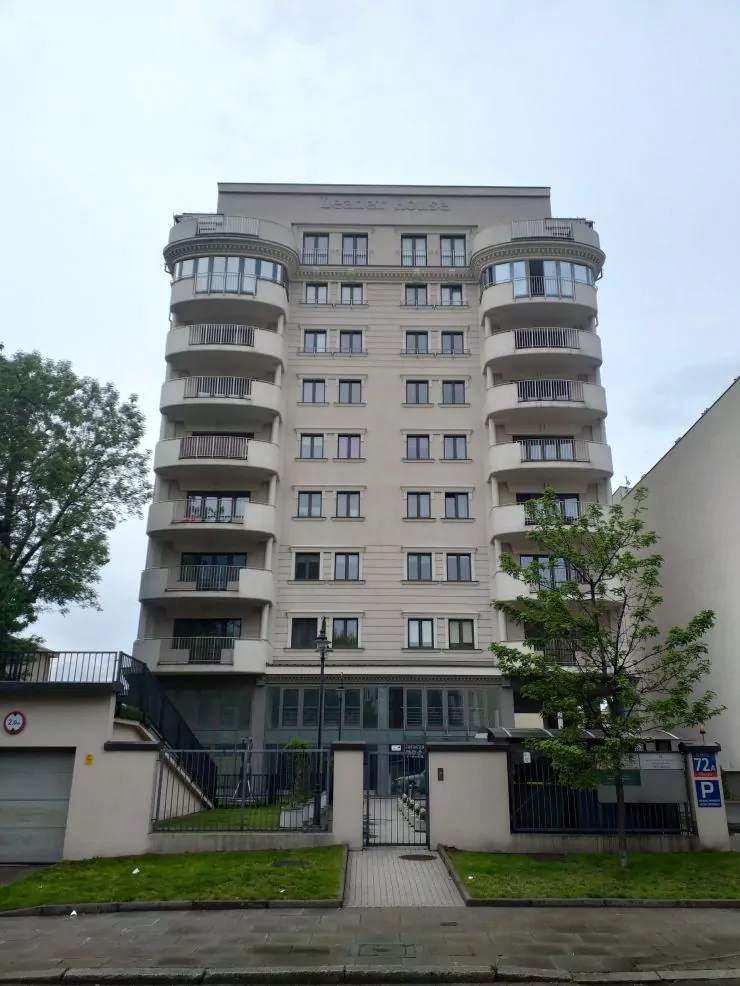


Former LZSP warehouse turned into apartment building
photo: Błażej Ciarkowsk
At the same time, recent years have brought some interesting examples of realizations that are evidence of the growing awareness of both architects and investors. Here is a former works print shop on Revolucja 1905 Street that has been transformed into a BaseCamp student house. Inspired by the investor, designers from Group 5 Architects transformed a late-modern industrial building into a welcoming space where student life boils over. Despite the architects' efforts to expose elements of the reinforced concrete structure, the loss of the raw industrial character proved inevitable. Where printing presses stood years ago today are co-working spaces and comfortable (and relatively expensive!) rooms. Gentrification proved to be the price the building had to pay to gain a second life.
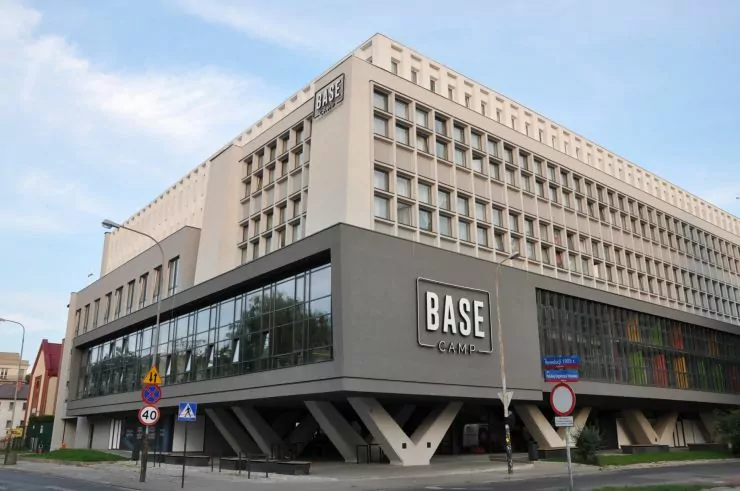


former works printing house transformed by Group 5 Architects into a luxury student house
photo: Blazej Ciarkowski
It is difficult to find other equally spectacular examples of modernization of Lodz's socmodernism, but a keen eye will notice the effects of correctly carried out renovation work in the Actor's House or the multi-family building at 8/10 Narutowicza Street. The original design assumptions were respected, abandoning architectural fireworks and unnecessary flashiness. The aspiration to "appear" at all costs, which often makes architects responsible for the modernization of post-war buildings eager to change their appearance, adding "something from themselves," was rejected. An example of such a seemingly simple, and therefore extremely successful, modernization is the "Domus" furniture house. The glass-and-steel box has been refreshed, retaining its original, unpretentious character.
{Image@url=https://cdn.architekturaibiznes.pl/upload/galerie/52516/images/original/ab02fcc915e9ec44d7cce08535329694.jpg,alt=Dom Actor's House by Helena and Jerzy Kurmanowicz ,title=Actor's House by Helena and Jerzy Kurmanowicz }
Actor's House by Helena and Jerzy Kurmanowicz
photo: Błażej Ciarkowski
Respect for the existing substance and renunciation of the creative ego seem indispensable when working on historic buildings. Unfortunately, so far this principle seemed not to apply to the architecture of post-war modernism. Only recent years have brought realizations that testify to the reversal of the unfavorable trend. In addition to the aforementioned "Domus" or the Actor' s House, the University of Lodz Library should be mentioned, as well as the multi-family buildings on Zamenhofa Street (the so-called Bolek and Lolek). Although the modernization of the façade of BULA involved some material changes - raw concrete and artificial stone were replaced by smooth, painted plaster, but the final effect should be assessed as satisfactory. There are also positive reactions to "Bolek," whose thermal modernization was carried out in an extremely delicate manner. Grooves were made in the plaster to imitate the divisions between the reinforced concrete slabs, and the damaged wooden curtain wall elements were replaced with new ones identical to the original ones.
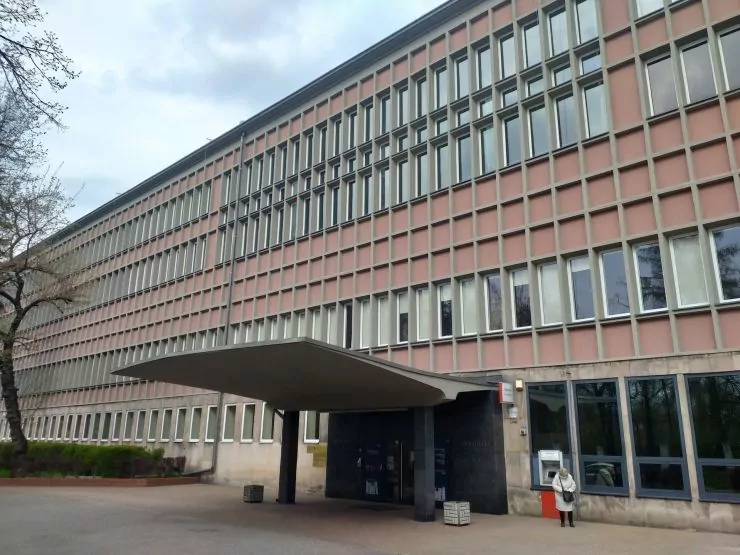

 .
.
after the renovation of the facade, the Edmund Orlik University of Lodz Library has retained its character
photo: Błażej Ciarkowski
The examples mentioned above emphatically testify to the growing social acceptance of the value of the architecture of socialist modernism. However, they should be followed by concrete actions by conservation offices and the inclusion of the most valuable examples of architecture of the 1960s and 1970s under legal protection through entry in the register of monuments. Perhaps, thanks to this, it will be possible to preserve for posterity examples of typical solutions, which, being repetitive and generally available, were not treated with due attention (in this way, most examples of "Leipzig"-type system facades disappeared from the landscape of Lodz ).
The value of the architecture of postwar modernism lies precisely in its simplicity and unpretentiousness. The sooner we realize that its essence is not only the iconicity of individual works, but above all the repetitiveness of typical solutions, the more of them will survive as a testimony of a bygone era and part of our common heritage.

































